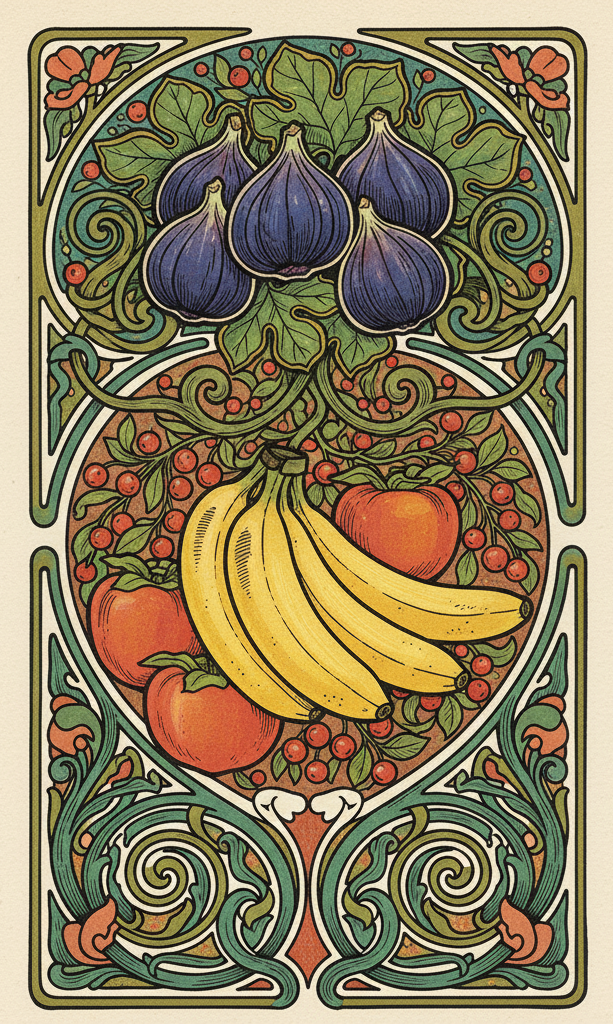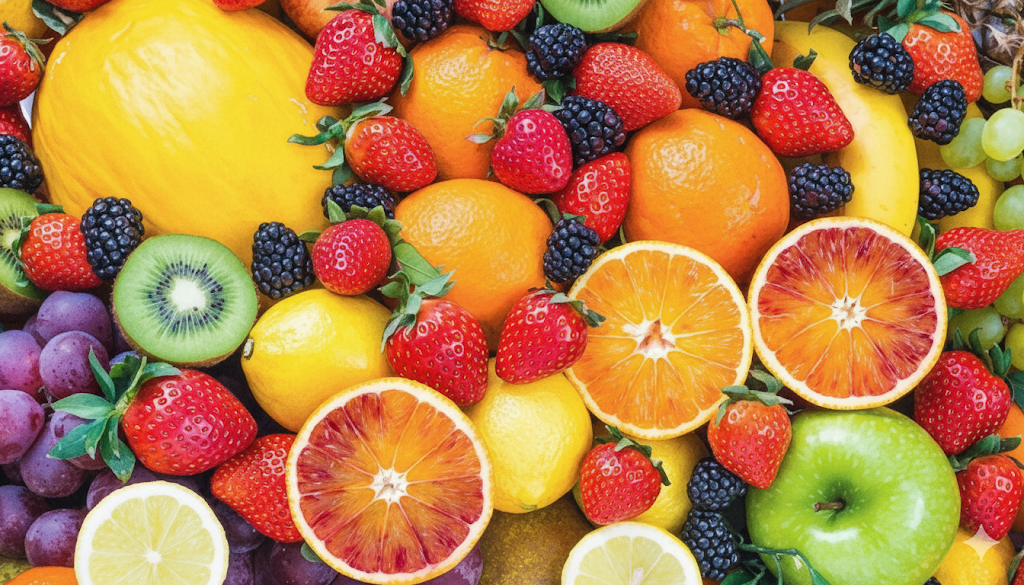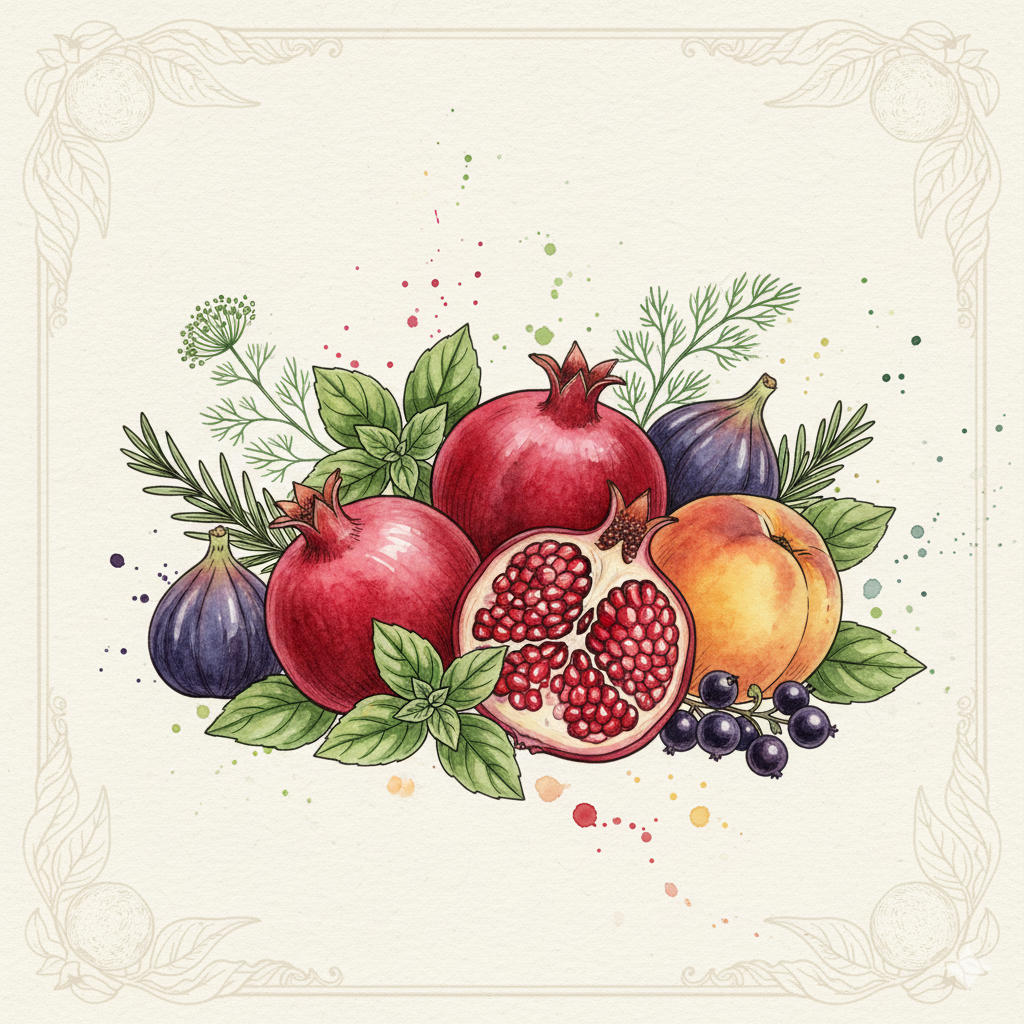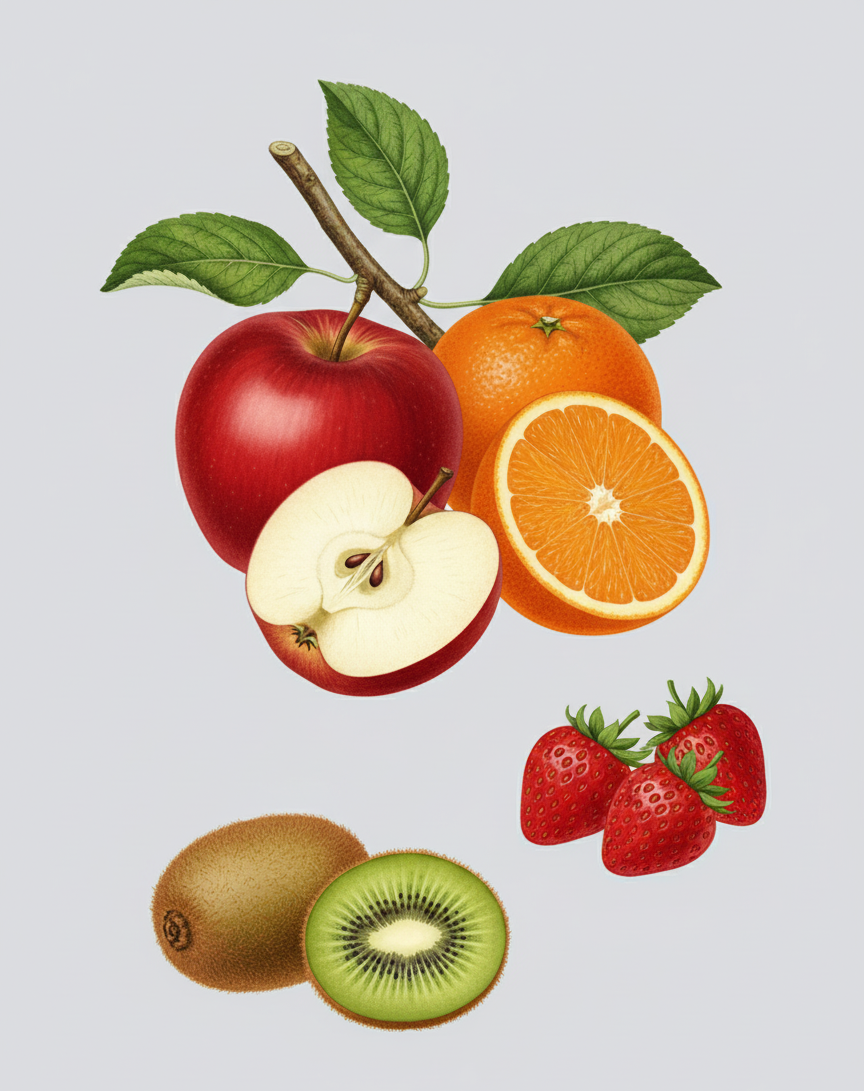Feast Your Eyes: A Celebration of Fruit in Art Nouveau Style
Art Nouveau, a movement that flourished in Europe from the late 19th century to the early 20th century, is renowned for its intricate designs and organic forms. Among the many subjects explored by Art Nouveau artists, fruit stands out as a vibrant and vital theme. This blog post delves into the enchanting world of fruit as depicted in Art Nouveau, examining its aesthetic significance, thematic depth, and the ways it has inspired modern interpretations.
The Aesthetic Appeal of Fruit in Art Nouveau
At its core, Art Nouveau sought to break away from historical styles and embrace the beauty of nature. Fruits, with their colors, shapes, and textures, provided a rich source of inspiration for artists. The organic forms of fruits allowed artists to explore flowing lines and elaborate patterns, quintessential elements of the Art Nouveau style.
The Symbolism of Fruit
In many cultures, fruits symbolize fertility, abundance, and the cycle of life. In Art Nouveau, these themes are often intertwined with the celebration of nature and femininity. Artists like Alphonse Mucha and Gustav Klimt frequently used fruits to convey deeper meanings, connecting the viewer with the natural world.
Color and Composition
The use of vibrant colors in fruit compositions not only draws the eye but also evokes emotions. The rich reds of apples, the bright yellows of bananas, and the deep purples of plums come together to create a visual feast. Artists often employed harmonious color palettes to enhance the overall aesthetic, making their works not just representations of fruit, but immersive experiences.
Notable Artists and Their Works
Several artists stand out for their unique interpretations of fruit within the Art Nouveau style. Their works encapsulate the essence of the movement and highlight the versatility of fruit as a subject matter.
Alphonse Mucha
Perhaps the most iconic figure associated with Art Nouveau, Alphonse Mucha’s works often feature fruit alongside graceful women. His pieces, like “The Seasons,” showcase women embodying the essence of different times of the year, with fruits symbolizing the bounties of each season. Mucha’s ability to intertwine human form with natural elements is a hallmark of his style.
Gustav Klimt
Gustav Klimt is another prominent artist whose works often illustrate fruit. In pieces such as “The Tree of Life,” Klimt uses fruit as a metaphor for interconnectedness and the cyclical nature of existence. His use of gold leaf and intricate patterns adds a layer of opulence, making the fruit not just a subject, but a part of a larger narrative.
Modern Interpretations of Art Nouveau Fruit
Today, the influence of Art Nouveau can still be seen in contemporary art, design, and even culinary presentations. Artists and designers continue to draw inspiration from the movement, reimagining fruit in innovative ways.
Culinary Art and Fruit Presentations
The principles of Art Nouveau have made their way into the culinary world, where chefs and food stylists create stunning fruit arrangements. The use of vibrant colors and flowing lines mirrors the aesthetics of the movement, transforming simple fruit into works of art. For instance, Revitalize Your Parties: The Art of Tropical Fruit Arrangements explores how to create visually stunning fruit displays that captivate guests.
Illustration and Graphic Design
Many modern illustrators are inspired by the Art Nouveau movement, incorporating its signature curves and motifs into their works. The Vibrant Fruit Collection: A Detailed Illustration showcases how contemporary artists pay homage to the intricate styles of the past while celebrating the beauty of fruit.
The Cultural Impact of Fruit in Art Nouveau
The depiction of fruit in Art Nouveau is not merely an aesthetic choice; it reflects broader cultural themes. As the movement emerged during a time of significant social and technological change, fruit served as a reminder of nature’s beauty and the importance of connecting with the natural world.
Fruit in Literature and Poetry
Fruit has long been a symbol in literature and poetry, representing themes of love, temptation, and the ephemeral nature of life. Many writers during the Art Nouveau era drew parallels between the beauty of fruit and the complexities of human emotion. This literary connection further enriches the understanding of fruit’s role in the Art Nouveau movement.
The Intersection of Nature and Technology
With the rapid industrialization of the late 19th and early 20th centuries, artists sought to counterbalance the mechanization of life by celebrating the organic forms of nature. The intricate details of fruit in Art Nouveau art reflect a longing for connection to the natural world amidst the rising tide of urbanization.
Exploring the Diversity of Fruits in Art Nouveau
The variety of fruits depicted in Art Nouveau art ranges from common orchard fruits to exotic tropical delights. Each fruit carries its own symbolism and aesthetic value, contributing to the overall narrative of the artwork.
Orchard Fruits
Fruits like apples, pears, and cherries are commonly found in Art Nouveau works. Their familiar shapes and vibrant colors make them ideal subjects for artists. The use of orchard fruits often evokes nostalgia and a sense of home, as seen in pieces such as A Gilded Arrangement of Tropical and Orchard Fruits.
Tropical Fruits
Tropical fruits, with their exotic appeal, add a sense of adventure to Art Nouveau art. Bananas, pineapples, and papayas were celebrated for their unusual shapes and vibrant colors, allowing artists to experiment with form and composition. These fruits often symbolize luxury and indulgence, reflecting the opulence of the Art Nouveau movement.
The Lasting Legacy of Art Nouveau Fruit Depictions
As we celebrate the beauty of fruit in Art Nouveau, it is essential to recognize its lasting impact on art and culture. The movement has influenced generations of artists, chefs, and designers, inspiring a continued appreciation for the natural world.
Art Nouveau’s Influence on Modern Art
Many modern artists and designers draw inspiration from the flowing lines and organic forms of Art Nouveau. The revival of interest in vintage aesthetics has led to a resurgence of Art Nouveau motifs in contemporary design, particularly in textiles, wallpaper, and graphic design.
Fruit’s Role in Contemporary Culture
In today’s society, the appreciation for fresh, vibrant fruits is ever-present. From farmers’ markets to gourmet restaurants, fruit is celebrated not only for its nutritional value but also for its aesthetic appeal. Articles like Discover the Top 10 Fresh Market Fruits You Should Be Eating Right Now highlight the importance of incorporating seasonal fruits into our diets, echoing the Art Nouveau movement’s celebration of nature.
Conclusion
The celebration of fruit in Art Nouveau style is a testament to the movement’s deep connection with nature, beauty, and symbolism. From the intricate works of artists like Alphonse Mucha and Gustav Klimt to modern interpretations in culinary art and design, fruit continues to inspire and captivate. As we feast our eyes on these stunning representations, we are reminded of the rich, vibrant world that surrounds us and the importance of celebrating the beauty of nature in our lives.



